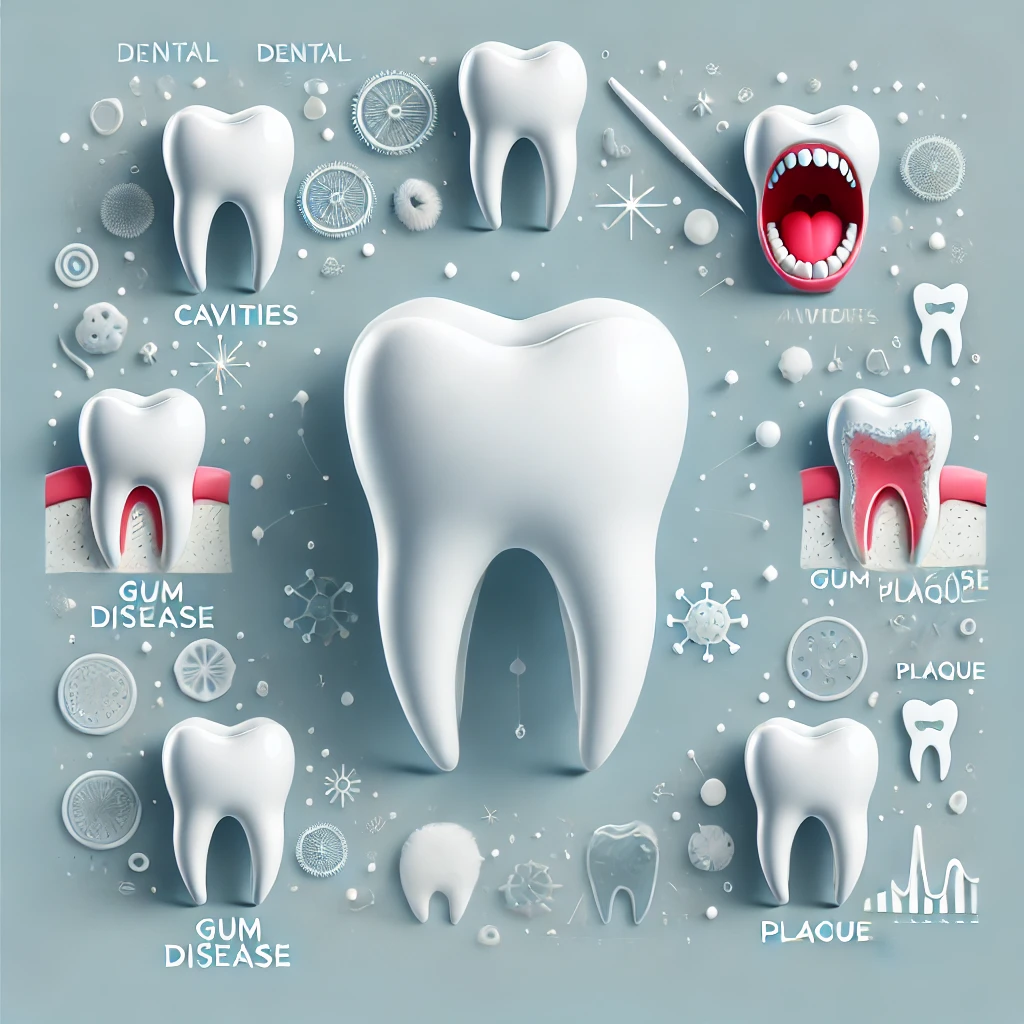Did you know that nearly half of the world’s population suffers from some form of oral health issue? Dental diseases are among the most common health problems, yet they often go unnoticed until they cause significant discomfort. From cavities to oral cancer, these issues can affect anyone, regardless of age or background. But the good news is that most dental problems are preventable with proper care and awareness.
In this article, we will explore the types of dental diseases, their causes, and how you can prevent or treat them. Whether you’re dealing with a persistent toothache or simply want to maintain your smile, this guide has got you covered.
Importance of Oral Health
Why Oral Health Matters
Oral health is not just about having a beautiful smile. It’s a critical part of your overall health. Poor dental hygiene can lead to serious conditions like heart disease, diabetes, and respiratory infections. Your mouth is a gateway to your body, and keeping it healthy helps prevent bacteria from spreading to other parts of your system.
Common Signs of Dental Issues
Recognizing early signs of dental problems can save you from discomfort and costly treatments. Look out for symptoms like:
- Toothaches or persistent pain.
- Bad breath that doesn’t go away with brushing.
- Bleeding, swollen, or receding gums.
- Sensitivity to hot or cold foods.
- Visible discoloration or damage to teeth.
Types of Dental Diseases
Tooth Decay (Cavities)
Cavities occur when plaque, a sticky film of bacteria, builds up on your teeth and produces acids that erode the enamel.
- Causes: Frequent consumption of sugary foods, poor oral hygiene, and lack of fluoride.
- Symptoms: Pain when biting, visible holes, or discoloration on teeth.
- Prevention: Brush twice daily, floss regularly, and use fluoride toothpaste. Regular dental cleanings can also help.
Gum Diseases
- Gingivitis: The early stage of gum disease, characterized by redness, swelling, and bleeding gums.
- Periodontitis: A more severe form that can cause tooth loss and affect the jawbone.
- Symptoms: Chronic bad breath, loose teeth, and receding gums.
- Treatment: Scaling and root planing, antibiotics, and in severe cases, gum surgery.
Tooth Sensitivity
Sensitive teeth result from worn enamel or exposed tooth roots.
- Causes: Over-brushing, gum recession, or acidic diets.
- Remedies: Use a toothpaste for sensitive teeth, avoid acidic foods, and consult a dentist for protective treatments.
Oral Cancer
Oral cancer is a serious condition that can affect the lips, tongue, cheeks, and throat.
- Risk Factors: Smoking, excessive alcohol consumption, and HPV infection.
- Early Detection: Regular dental screenings are crucial.
- Signs: Persistent sores, white or red patches, and difficulty swallowing.
Other Dental Problems
- Halitosis (Bad Breath): Often caused by poor oral hygiene or underlying issues like gum disease.
- Malocclusion (Misaligned Teeth): Can lead to difficulty chewing and jaw pain.
- Tooth Erosion: Caused by acid wear, leading to sensitivity and discoloration.
Causes and Risk Factors of Dental Diseases
Poor Oral Hygiene
Failing to brush and floss regularly allows plaque and bacteria to accumulate, leading to cavities and gum disease.
Diet and Nutrition
Diets high in sugar and acidic foods contribute to tooth decay and erosion. Processed foods can also lack the nutrients necessary for strong teeth and gums.
Smoking and Alcohol
Tobacco products and excessive alcohol consumption significantly increase the risk of gum disease, tooth loss, and oral cancer.
Genetics
Some people are more predisposed to dental issues due to their genetic makeup, such as susceptibility to cavities or gum disease.
Stress and Grinding (Bruxism)
Stress can lead to teeth grinding, which wears down enamel and causes jaw pain.
Prevention of Dental Diseases
Daily Oral Hygiene Practices
- Brush your teeth twice a day with fluoride toothpaste.
- Floss daily to remove food particles and plaque between teeth.
- Use an antimicrobial mouthwash to reduce bacteria.
Dietary Habits
- Incorporate foods rich in calcium and vitamins, like dairy products and leafy greens.
- Limit sugary snacks and acidic beverages.
- Drink plenty of water to rinse away food particles and maintain hydration.
Regular Dental Visits
- Visit your dentist at least twice a year for cleanings and check-ups.
- Professional cleanings can remove tartar that regular brushing cannot.
Lifestyle Changes
- Quit smoking to improve oral and overall health.
- Use a nightguard if you grind your teeth at night.
- Manage stress through relaxation techniques.
Modern Treatments for Dental Diseases
Fillings and Crowns
Dentists use fillings to repair cavities and crowns to restore severely damaged teeth.
Root Canal Therapy
This treatment saves a tooth with infected pulp by removing the damaged tissue and sealing the tooth.
Periodontal Surgery
Advanced gum disease may require surgery to remove bacteria and restore gum health.
Teeth Whitening
For discolored teeth, professional whitening treatments can restore a bright smile.
Dental Implants
Implants replace missing teeth, offering a durable and natural-looking solution.
Orthodontics
Braces and clear aligners correct misaligned teeth, improving both function and appearance.
Addressing Common Questions
- How do I know if I have a dental disease? Look for symptoms like pain, swelling, or bleeding gums. Regular dental check-ups can detect issues early.
- Can dental diseases be reversed? Early-stage issues like gingivitis can often be reversed with proper care. Advanced problems require professional treatment.
- Are natural remedies effective for teeth problems? While natural remedies may help alleviate minor symptoms, they should not replace professional dental care.
- Is dental treatment expensive, and how can I afford it? Preventive care is generally affordable. Many dental clinics offer payment plans or accept insurance to reduce costs.
Impact of Untreated Dental Diseases
Failing to address dental problems can lead to:
- Chronic pain and discomfort.
- Difficulty eating and speaking.
- Systemic health issues like cardiovascular disease.
- High costs for advanced treatments like surgery or implants.
Conclusion
Dental diseases are common, but they’re also largely preventable. By understanding the types of dental problems, their causes, and how to care for your teeth, you can maintain a healthy smile and improve your overall well-being.
Actionable Takeaways:
- Practice good oral hygiene daily.
- Limit sugary and acidic foods.
- Schedule regular dental check-ups.
Your oral health is in your hands. Start making changes today to ensure a lifetime of healthy teeth and gums!


